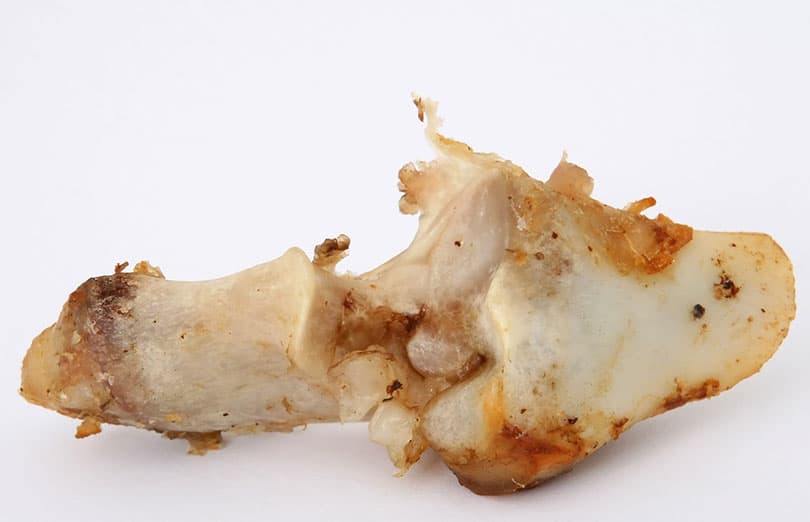A dog’s love of bones is a tale as old as time, but are bones really safe for dogs? It may surprise some to learn that chewing on and eating bones can actually pose significant health risks. As to whether or not it’s okay to give a dog a lamb bone, the answer is too complicated to boil down to a simple “yes” or “no”, so keep reading to get the facts on including lamb bones in your dog’s diet.
Are Lamb Bones Safe for Dogs?
Whether or not you can safely give your dog a bone comes down to a few different factors. First of all, you should never feed cooked bones to your dogs, no matter where they’ve come from—even commercially sold cooked bone dog treats can be dangerous.
Cooked bones become splintered and break down more easily, and the remnants can then cause damage to your dog’s internal organs. Some dogs have become very sick, have required veterinary treatment, and some have even died after consuming cooked bones, so it’s just not worth taking the chance.
What About Raw Bones?
Raw bones are safer than cooked ones but still pose some risks. In terms of the positives, recreational raw bones let your dog act out their natural urges to chew and provide mental stimulation. They also have some dental benefits and help keep your dog’s mouth clean, plus are a good source of calcium and phosphorus.
According to Dr. Karen Becker, DVM, picking a suitable size of bone for your dog is key. She recommends picking a bone the same size as your dog’s head. She also notes the importance of supervising your dog when they are chewing on bones.
One of the risks of meaty raw bones is the potential for bacterial contamination if they’re left out for too long. To help reduce this risk vets recommend acquiring the bones from a trustworthy source. It’s also possible for raw bones to splinter and end up in your dog’s stomach, just like cooked bones can. Even larger and rounder bones can cause health issues like broken teeth and tooth infections.

How To Feed Bones to Dogs
If you are planning to feed raw lamb bones to your dog, check out these safety tips:
- Talk to a vet or nutritionist before making your decision. These people are in the best position to advise you as to whether or not bones would be beneficial to your dog.
- Choose a bone the same size as your dog’s head to reduce the risk of choking.
- Don’t feed pork bones as these can break and splinter more easily than other bones.
- Acquire your bones from a trustworthy local butcher with an excellent safety record to reduce the risk of contamination.
- Give your dog bones only at certain times, ideally two times per week a few days apart, and only for 15 minutes at a time. Chewing bones too often can cause constipation.
- Don’t let bones fester—get rid of them after a chewing session as they’re more likely to cause contamination if left out. Clean surfaces that have been in contact with the bones.
Conclusion
The truth is that giving bones to your dog, whether cooked or raw, comes with certain risks attached, and this includes commercially-sold bones. Major hazards include choking and bone fragments getting lodged in the stomach and intestinal tract. If you’ve decided that giving your dog raw bones just isn’t worth the risk, your dog can act out their chewing impulses on a chew toy instead.
Featured Image Credit: Shutterbug75, Pixabay














